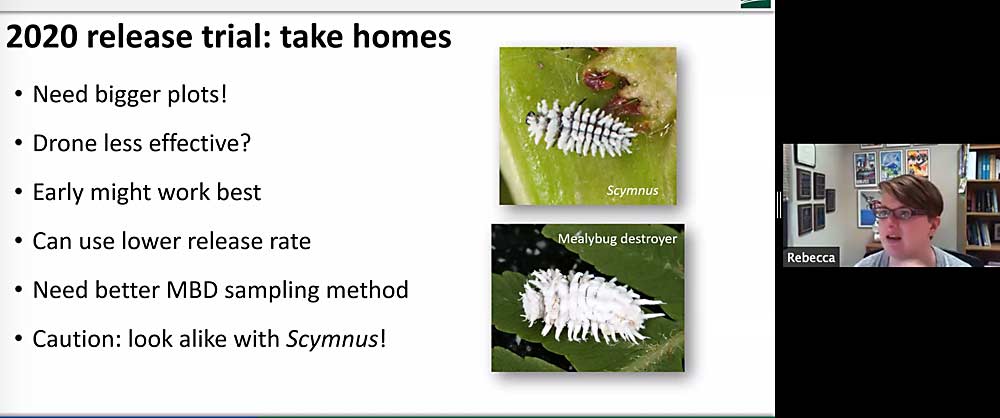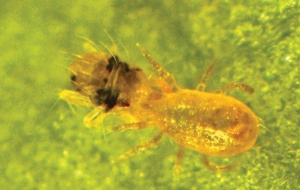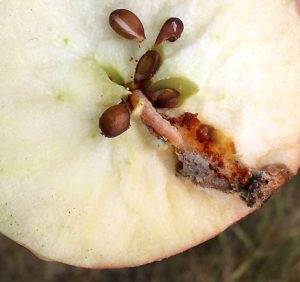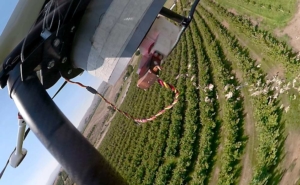
There are two types of the predatory mites found in orchards, with different diets and sensitivities to pesticides. Just a few weeds in an herbicide strip may provide habitat for predators. And releasing mealybug destroyers seems to help control pests, but more study is needed.
Those were a few takeaways from Rebecca Schmidt-Jeffris of the U.S. Department of Agriculture at today’s pest session of the virtual Washington State Tree Fruit Association Annual Meeting.
Schmidt-Jeffris, an Agricultural Research Service scientist at the Wapato laboratory, told growers in the virtual session that Amblydromella caudiglans is a lesser-known predator mite that has a more varied diet and is a bit more sensitive to fungicides and miticides than the Galendromus occidentalis, commonly known to growers as the “typh.” A. caudiglans may naturally be more abundant in orchards, too, she said.
The differences aren’t huge but may give growers another biological tool to control mites in their orchard, she said. A. caudiglans feeds on everything from pollen to psylla honeydew to sea monkey eggs, which may mean they can be baited into hanging around to also eat mites.
Schmidt-Jeffris also shared early results from trials releasing mealybug destroyers and letting some weeds grow in an herbicide strip, to provide habitat to beneficial insects. “You might just relax your weed management a little bit,” she said.
Also in the session, Betsy Beers, entomologist at Washington State University, shared results of her three-year study of sterile codling moth release in Okanogan County that seems to have reduced wild populations and fruit damage. “It’s hard to argue with success,” she said.
Meanwhile, Ken Johnson of Oregon State University gave his usual tips for nonantibiotic fire blight control, which involve copper, lime sulfur and Blossom Protect with rigid and intricate timing protocols.
A panel with Brad Higbee of Trece, Columbia Basin organic grower Dain Craver and Jeff Leonardini of Washington Fruit and Produce Co. in Yakima discussed organic techniques for dealing with fire blight, codling moths and other pests. One of the tips: Don’t put out bins before you need them. Sometimes they harbor pests.
The conference continues this afternoon.
—by Ross Courtney









The information that you have shared with us through this article about the pests and about the mealybug destroyers will help us in knowing better about it. Thank you for listing it together and sharing this information with us. Keep sharing more such articles like this with us in the future also.